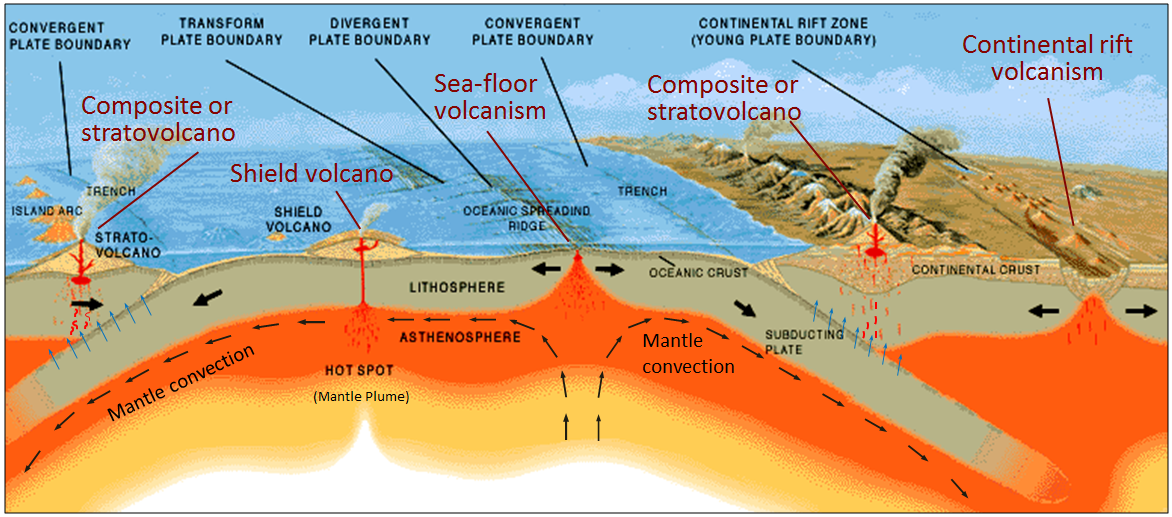

Magma cannot penetrate this thick crust instead, it cools intrusively and forms granite. Instead, the continental crust at these convergent boundaries gets folded, faulted, and thickened, forming great mountain chains of uplifted rock. This results in very little subduction, as most of the rock is too light to be carried very far down into the dense mantle. When plates converge, they do so in one of three settings: oceanic plates collide with each other (forming oceanic-oceanic boundaries), oceanic plates collide with continental plates (forming oceanic-continental boundaries), or continental plates collide with each other (forming continental-continental boundaries).Įarthquakes are common any time large slabs of Earth come into contact with each other, and convergent boundaries are no exception. In fact, most of the Earth's most powerful quakes have occurred at or near these boundaries.ĭomdomegg / Wikimedia Commons / CC BY 4.0 ( Text labels added by Brooks Mitchell)Ĭontinental-continental convergent boundaries pit large slabs of crust against each other. Oceanic plates are made up of heavier basalt, the result of magma flows from mid-ocean ridges. The crust that makes up continental plates is thicker yet less dense than oceanic crust because of the lighter rocks and minerals that compose it. Convergent plate boundaries are often the sites of earthquakes, volcanoes, and other significant geological activity.Įarth's surface is made up of two types of lithospheric plates: continental and oceanic.Each one is unique because of the density of the plates involved. There are three types of convergent plate boundaries: oceanic-oceanic boundaries, oceanic-continental boundaries, and continental-continental boundaries.When two tectonic plates move toward each other and collide, they form a convergent plate boundary.The Red Sea and the Dead Sea are thought to have been formed by the same divergent boundary.ĭivergent boundaries, create mid ocean ridges, undersea volcanos, islands, rift valleys and new oceans.


The Rift Valley in East Africa is the result of a divergent boundary (image below). This was part of the evidence that convinced Scientists that the theory of (Continental Drift) Plate tectonics was correct.ĭivergent boundaries also create Rift Valleys and new oceans. However in Iceland the the volcanos reach the surface forming the Island chain.Īs the crust is pushed in two different directions it forms magnetic strips that are reflective and symmetrical on both sides of the Mid Atlantic ridge. Many of these volcanos are undersea volcanos forming the mid Atlantic ridge. The Mid Atlantic Ridge creates volcanos where the hot magma erupts from the underlining mantle. This causes the crust to separate into two different pieces.Īn example of a divergent boundary is the mid Atlantic Ridge (there are mid ocean ridges in the Indian, and Pacific Oceans as well). As the convection current comes to the surface it also moves outward in both directions (see image below). At divergent boundaries new crustal material is brought to the surface.


 0 kommentar(er)
0 kommentar(er)
